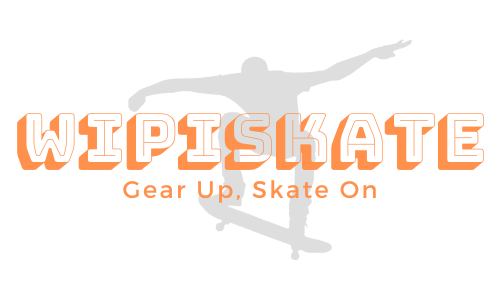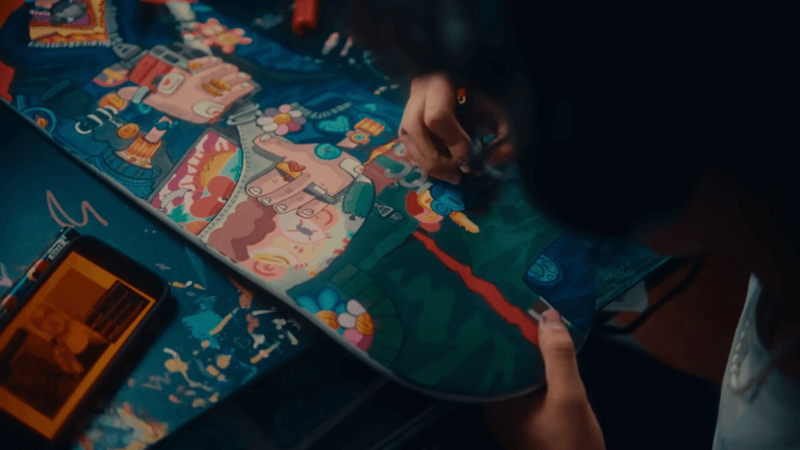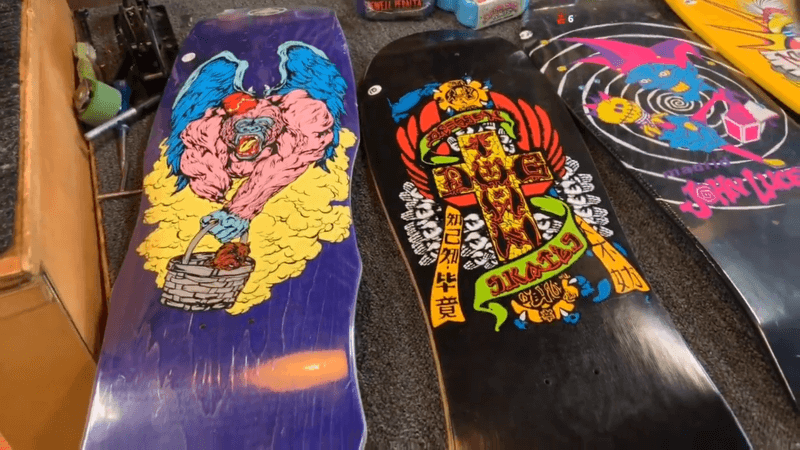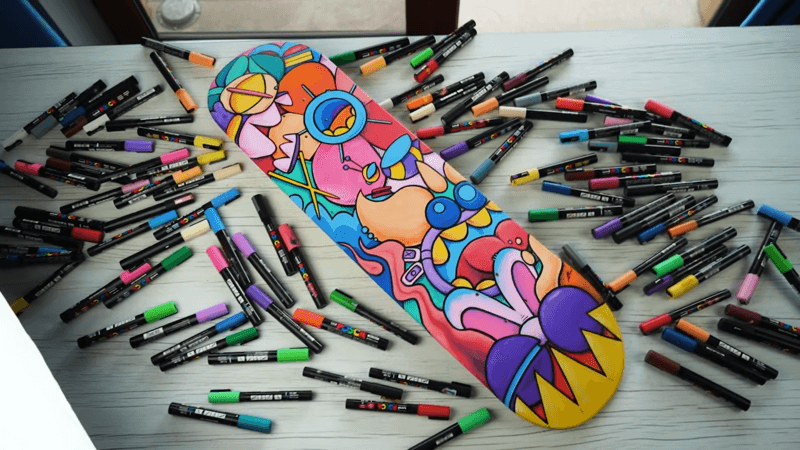No products in the cart.
Blog
Skateboards For Beginners : Choosing The Perfect Board
The door to a world of excitement, creativity and new challenges will be opened by skateboards for beginners. Whether you’re looking to cruise around your neighborhood or master your first trick, starting with the right skateboard and knowing the basics is crucial.
Everything you need to know, from choosing the right skateboard and mastering the basics to exploring easy tricks that will have you skating like a pro in no time will be explored in this blog.
What is the Best Skateboard for a Beginner?

The best skateboard for a beginner is typically a complete setup that balances stability, control, and ease of use. A deck width between 7.5″ and 8.0″ offers a stable platform for learning, while medium-soft wheels (around 90A to 95A) provide a good grip on various surfaces without being too slow. The trucks should match the deck width to ensure balanced turning.
A complete skateboard setup allows beginners to focus on learning to ride and perform basic tricks without worrying about customization or upgrades.
Best Size Skateboard for Beginner
Choosing the right skateboard size is your first step towards smooth cruising and confident tricks. Let’s break down the sizes that beginners will love.
- Deck width: 7.5″ to 8.0″ – This width range offers a stable platform that’s easy to control, making it ideal for beginners who are still mastering balance and basic movements.
- Deck length: 28″ to 32″ – This length provides enough space for comfortable foot placement while still being manageable for most riders.
- Wheel size: 52mm to 54mm – Wheels in this size range offer a good balance between speed and control, suitable for both street skating and cruising.
- Truck width: 7.5″ to 8.0″ – Trucks should align with the deck width to ensure even turning and stability, which is crucial for beginners to maintain balance and control.
Types of Skateboards for Beginners
Whether you’re aiming to cruise the streets or master your first ollie, picking the right type of skateboard is key. Here are the best options for beginners.
- Standard skateboard: This type is versatile and great for beginners who want to learn tricks. It is ideal for street and park skating and has a symmetrical form with kicktails on both ends.
- Cruiser skateboard: Designed for comfortable riding on streets and sidewalks, cruisers have softer wheels and a slightly wider deck, making them ideal for commuting and casual rides.
- Mini skateboard: Smaller in size, mini skateboards are perfect for younger beginners or those with smaller feet. They can be controlled easily due to the size and are lightweight, making them less intimidating for new skaters.
- Old school skateboard: Characterized by a wider deck with a flat nose and a kicktail, old-school skateboards are great for beginners interested in pool or ramp skating, offering more stability and control.
Are Longboards or Skateboards Better for Beginners?
Choosing between a longboard and a skateboard can be challenging for your learning experience. Let’s break down which one suits your beginner needs best.
| Criteria | Longboard | Skateboard |
| Stability | Longboards are generally more stable due to their longer and wider decks, which make balancing easier. | Skateboards are less stable, however they can offer more agility, which can be beneficial as skills progress. |
| Ease of Use | Longboards are easier for beginners to cruise and carve, especially on flat or downhill surfaces. | Skateboards are better suited for learning tricks, street skating, and navigating skateparks. |
| Learning Curve | Longboards have a gentler learning curve, allowing beginners to focus on balance and riding. | The learning curve for skateboards might be higher since they require more deft control and agility. |
| Purpose | Longboards are best for commuting, long-distance rides, and downhill cruising, offering a smooth and stable ride. | For individuals who enjoy tricks, street skating, and having more agility in skateparks, skateboards are perfect. |
| Portability | Longboards are less portable due to their size, making them harder to carry and store. | Skateboards are easier to transport and store in smaller locations since they are more lightweight and portable. |
How to Ride a Skateboard for Beginners?
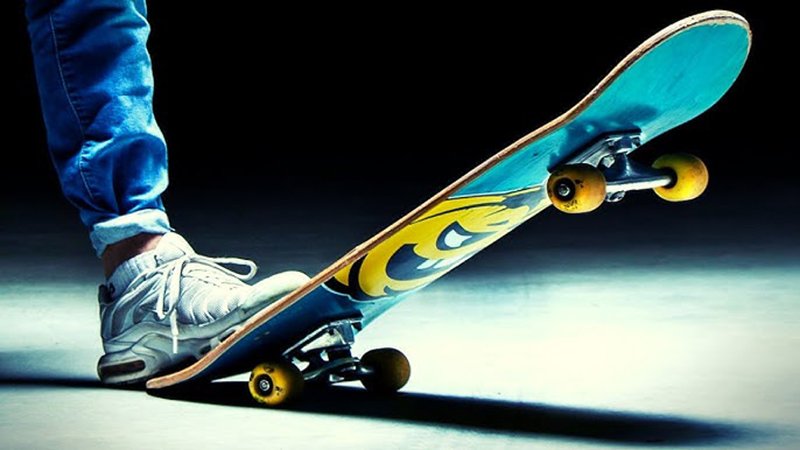
Learning how to ride a skateboard as a beginner starts with finding your balance and getting comfortable on the board. Begin by standing with your feet shoulder-width apart, knees slightly bent, and your weight centered. Practice pushing off with one foot while the other stays on the board, gradually building up your confidence. You will soon be gliding smoothly and ready to tackle more advanced moves with consistent practice.
What are the Basic Steps in Skateboarding?
Starting with the right steps is crucial for any new skater. Please follow these basic steps that will put you on the road to success:
- Find your stance: Determine whether you’re regular (left foot forward) or goofy (right foot forward).
- Pushing: Place your front foot on the board, push off with your back foot, then place it back on the board.
- Balancing: Keep your knees bent, and distribute your weight evenly to stay balanced.
- Turning: Lean in the direction you want to turn, using your shoulders and arms for guidance.
- Stopping: Use your back foot to drag on the ground or gently apply pressure on the tail to stop.
Easy Tricks on a Skateboard for Beginners
You will feel more confident and impress your friends with these easy tricks:
- Ollie: The foundational trick where you pop the tail and jump with the board.
- Manual: Balancing on the back wheels while riding.
- Shuvit: Spinning the board 180 degrees without the rider rotating.
- Kickturn: A quick turn using the back wheels as a pivot.
- Caveman: Jumping onto the board while holding it, then releasing it mid-air.
What Age Should You Start Skateboarding?
Children as young as 5 or 6 years old can start skateboarding with proper supervision and safety gear. At this age, they can begin learning basic balance and coordination on a skateboard. However, older beginners, even in their teens or adulthood, can also pick up skateboarding effectively with practice and patience.
Where to Get a Skateboard for Beginners?
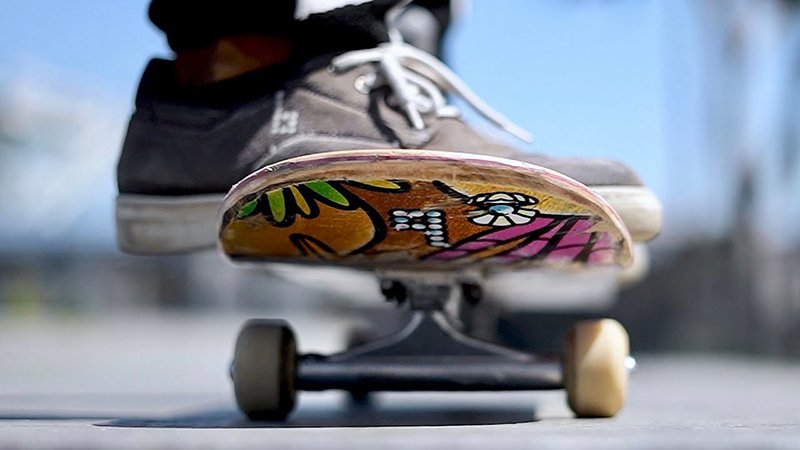
Finding the right place to buy your first skateboard is just as important as choosing the board itself. Here are some of the best options to consider:
- Local skate shops: These shops offer expert advice and often have a variety of complete skateboards tailored for beginners.
- Online retailers: Websites like Wipiskate, Amazon, and Skate Warehouse offer a wide selection of beginner skateboards with detailed customer reviews.
- Sporting goods stores: Stores like Dick’s Sporting Goods or Decathlon provide beginner-friendly skateboards, often at affordable prices.
- Second-hand options: Consider checking platforms like eBay or local classifieds for quality used skateboards at a lower cost.
By choosing one of these trusted sources, especially Wipiskate, you’ll be well on your way to getting the perfect skateboard to start your journey.
Conclusion
Skateboards for beginners are a new hobby and the start of an exciting journey into the world of skateboarding. With the right board, a grasp of the basics, and some practice, you’ll quickly build confidence and start enjoying the thrill of skating.
Hello, I am Hazel Bennett, an experienced copywriter specializing in the fascinating topic of CBD for dogs. With a passion for pet wellness and extensive knowledge of CBD’s potential benefits, I am here to provide you with informative and engaging content.
